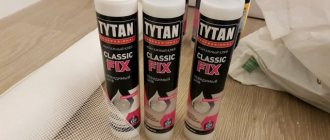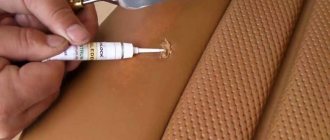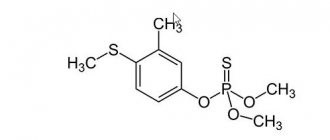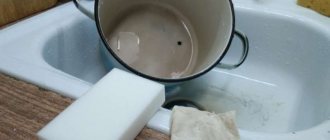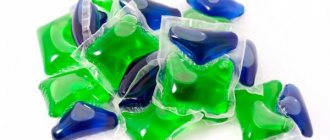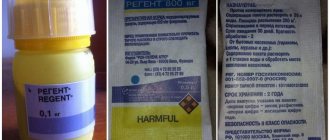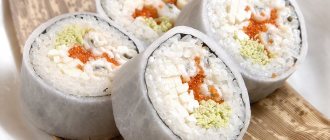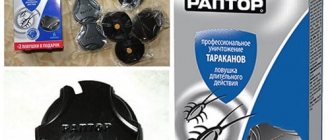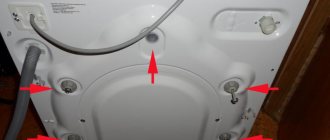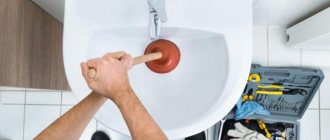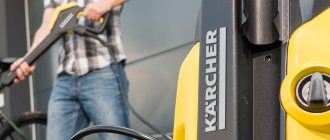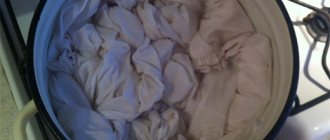Composition and quality
The kit includes two types of resins (epoxy, polyamide). The volume of containers depends on the manufacturer. The standard mixing ratio is 1:2.
Epoxy resin is a transparent mass with a yellowish tint and a soft consistency. The substance provides high adhesion to metals, resistance to chemical elements, water and heat resistance.
It is not worth using epoxy resin alone, as it does not provide a strong bond. The seam will be fragile and will not be able to withstand vibration processes.
To give the resin elasticity, a special hardener is added. The hardener is polyamide resin. It is characterized by increased elasticity, abrasion resistance, and waterproofing characteristics.
When combining resins, an adhesive with unique properties is obtained:
- high strength connection to almost all surfaces;
- resistance to chemicals;
- creating a complete seal of the seam;
- moisture and temperature resistance;
- The seam can withstand loads and vibrations.
Polyamide resin
In particular, the VK-9 adhesive contains polyamide resin as a hardener. This is a condensation-type polymer compound that has the following properties:
- high elasticity;
- abrasion resistance;
- high waterproofing properties.
The interaction of epoxy resin and polyamide produces an adhesive composition with unique characteristics.
Purpose
VK 9 has high adhesion characteristics. Connects metal, glass coatings, polymer, clay elements and other materials that are exposed to temperatures. The product is actively used in the radio engineering field.
Thanks to its viscosity, the mass does not spread and evenly fills the bonded surfaces. When creating certain structures, the fact that there is no shrinkage is taken into account.
It is better to use the mass at room temperature; in industry it is permissible to use it at a temperature of 60 degrees. The average consumption is 150 g per m2. The resins do not need to be heated before mixing; it is enough to mix while maintaining the correct proportions.
Glue properties
In addition, VK-9 glue has other important properties:
- — high degree of adhesion to metals,
- - resistance to chemical influences,
- - resistance to temperature changes,
- - resistance to chemical influences,
- - high electrical insulation,
- - excellent seam sealing.
Due to the ability of VK-9 glue to firmly connect materials with non-porous surfaces, it is actively used both in everyday life and in industry.
Application:
- - in construction,
- - in the aviation industry,
- - in the radio engineering field,
- - in shipbuilding,
- - in the manufacture of solar panels.
Instructions for using VK 9 glue
According to the instructions for using VK 9, you must complete the following points:
- The surfaces to be glued are cleaned of dirt to give better adhesion; it is also recommended to clean them with sandpaper.
- Steel and metal surfaces are treated with petroleum solvents to prevent the formation of rust.
- Degreasing with alcohol and solvents.
- The resins are mixed in appropriate proportions; to speed up drying, more polyamide resin is added.
- The glue is applied to the two planes to be glued with a spatula or spray, depending on the type of surface.
- The elements are connected and fixed, placed under a press, yew for 24 hours.
To speed up the polymerization process, the product is heated to 60 degrees.
Scope of application of epoxy adhesive VK-9 and its properties
Due to the high adhesion, chemical and atmospheric resistance of VK-9, in everyday life it is used mainly for gluing metal and steel surfaces with glass and ceramics. This glue is also used in radio engineering. There are no other chemical compounds capable of performing such tasks under the same conditions.
Due to the fact that VK-9 glue perfectly fills the entire gluing surface, it has virtually no shrinkage. This property is also taken into account when planning the structure of a particular glued product.
VK-9 glue is used at room temperature. It does not need to be heated or melted. It is enough to mix epoxy resin with polyamide resin in a ratio of 1:2 and use it for gluing. In the video you can watch a guide on how to prepare the adhesive.
Instructions for use:
- Before gluing, the surfaces should be sanded.
- The metal or steel alloy that will be glued must be treated with any petroleum solvent (gasoline, kerosene). This is done to prevent corrosion.
- Nefras residues must be removed from surfaces with a solvent.
- Mix the components in the recommended ratio. If you need to quickly get results, you can additionally add a small part of the hardener, according to the manufacturer's instructions.
- Apply a thin layer of glue to the surfaces to be glued. The glue is applied with a spatula or brush onto smooth surfaces. Can be applied to porous surfaces by spray.
- For better adhesion at room temperature, the fastened parts must be placed in a vice for a day.
- If the temperature is less than 20⁰C, then curing will proceed much slower. To speed up the process, it is necessary to provide heating.
- The higher the temperature, the less time is needed for gluing:
- room temperature – 24 hours;
- temperature above 50⁰С – 1 hour.
- Additional heat treatment will also increase the strength of the connection.
Safety precautions when working
When working, you must observe safety precautions:
- VK 9 glue is toxic, so it is not used when gluing food items.
- Work cannot be performed by persons under 18 years of age.
- The room in which repairs are being carried out must be well ventilated or have a working ventilation system.
- When working, IZ products are used, hands are soaked in cream.
- If the mixture gets on the skin, wash it immediately with running water and consult a doctor.
- Disposable containers are used to dilute the glue.
Precautionary measures
- The glue is toxic, so you should not glue parts or objects in contact with food or drinking water.
- Only persons over 18 years of age can work.
- All work must be carried out in a well-ventilated area or with forced ventilation turned on.
- You must work in personal protective equipment. Before gluing, hands are treated with protective cream.
- If glue gets on the skin, the area should be immediately rinsed under a large stream of water, and if necessary, consult a doctor.
- It can only be diluted in disposable containers or in containers that can then be thrown away.
How to make conductive glue at home
There are several recipes for making conductive glue yourself.
Recipe 1: Second glue + simple pencil
- Take any cyanoacrylate glue (the so-called super glue) in a metal tube, add graphite powder to it in a ratio of 1 to 1 and stir until a homogeneous consistency is formed.
- For ease of use, you can prepare the glue directly in the tube.
- To do this, carefully unroll it from the end, add powder, stir with a match or toothpick and wrap it again.
- The required amount of graphite powder can be easily obtained by grinding the rod of the most ordinary pencil using a blade, a file or sandpaper.
Recipe 2: Battery + tsaponlak
For this recipe you need a regular salt pen-type battery, or rather not the battery itself, but a graphite rod from it.
- Graphite is crushed and mixed with tsaponlak in equal proportions.
- Tsaponlak is a transparent solution that is used in radio electronics to coat soldered electrical connections. You can buy it in a store for radio amateurs; a 30 ml glass bottle costs about 50 rubles.
- You can prepare the glue directly in the bottle, and you can store it in it for a long time.
Recipe 3: Epoxy + aluminum powder
Conductive adhesive can also be prepared using epoxy resin.
- The cheapest two-component adhesive of the domestically produced EPD brand is suitable for this (costs about 150-200 rubles per 280 grams).
- Aluminum powder is usually used as a conductive filler.
- The recipe is simple: the resin is mixed with aluminum powder until it becomes a thick cream. Immediately before gluing, the prepared composition is mixed with a hardener in a ratio of 10:1.
Recipe 4
- Powdered graphite and silver, vinyl chloride-vinyl acetate copolymer and acetone are thoroughly mixed in a porcelain mortar.
- You will need any regular nail polish.
- Next, you can fill the crumbs with varnish and mix, for example, with a match.
- The result is a black-gray liquid, similar in consistency to syrup.
- It should be stored in a glass container with a tight-fitting lid.
- The glue is stirred before each use.
- It dries on the product for about fifteen minutes.
VIDEO INSTRUCTION
https://youtube.com/watch?v=u2yLw5ru0FU
All of the recipes listed above allow you to quickly and at minimal cost prepare glue at home, which is suitable for repairing heated threads in the rear window of a car and solving other problems.
Important point: The more conductive filler there is in the adhesive solution, the better the conductivity will be, but the strength of the connection will inevitably decrease.
Let's consider the use of conductive adhesive using the example of auto glass heating repair:
- wipe the rupture area with solvent;
- We glue tape on top and bottom of a thin thread;
- apply adhesive to the tear site;
- After the glue has completely dried, remove the tape.
Author of the article - Kristina Sekushina
Security measures
We must remember that VK9 glue is a chemical composition, and when working with it it is necessary to observe safety measures. It should not be used for gluing kitchen utensils (to prevent contact with food),
The adhesive should be used in rooms with good ventilation or in the open air. When mixing the adhesive components, you must use protective equipment :
- Respirator,
- Protective glasses
- Gloves
Important! If the composition gets into your eyes, you must immediately contact an ophthalmologist!
Important! If glue gets on your skin during work, you must immediately wash the damaged area with acetone or saline solution!
- do not use reusable containers for mixing the composition (it is recommended to combine the adhesive components immediately before use in containers, which are best disposed of later),
— people over 18 years of age should work with glue.
The most favorable temperature for working with glue is room temperature (+20-25 degrees), but in industry glue is also used at higher temperatures -50-60 degrees. It is recommended to store the product in a cool, dry place.
What is good about b7000 touchscreen adhesive, and what other purposes is it used for?
This multi-purpose compound can be used to bond metal, glass, plastic and wood materials, as well as electrical components and other items. In addition, adhesive sealant for gluing touchscreens b7000 is widely used for restoring electronic gadgets.
This glue is offered in thick polyethylene tubes of various sizes and has characteristics that make it almost universal.
The tube is equipped with a thin metal tip, which makes it possible to conveniently apply the composition to various surfaces, adjusting the required amount.
B7000 is considered practical and easy to use, as it becomes plastic when heated to a temperature of 80-100°C. Previously glued materials can be freed from soft glue if the need arises.
This feature allows you to use B-7000 glue to replace broken covers or glass when repairing many mobile phones.
Step-by-step instructions for using b7000 glue
The glue is easy to use and is used according to the following scheme, which is suggested in the instructions for the composition:
- The surfaces of a gadget or other object to be glued must first be cleaned of dust and old glue.
- After the surfaces are cleaned, they are degreased. The surfaces must be allowed to dry.
- When the surfaces are completely dry, you can begin to apply the required layer of glue. If you need to glue the touchscreen, then you should not immediately connect it to the surface of the smartphone. You need to wait a few minutes for the glue to begin to harden. After the glue becomes more viscous, you need to connect the touch panel to the frame. Next, you need to press the surfaces against each other. This method allows you to avoid the glue from flowing between the screen and the touchscreen to prevent the formation of smudges.
- The glued surfaces that have been connected to each other must be pressed and left for some time (about a day) in this position until completely dry. Although final drying will occur after twenty-four hours, it is worth starting to use the glued product after forty-eight hours for a more reliable result.
- If excess glue appears during the gluing process, it will be very easy to remove it using the rolling method. It is enough to run a non-sharp object or finger over the places where the composition has gone beyond the boundaries of the working surfaces so that the glue begins to form lumps. It can be easily removed from the cracks with a needle.
VIDEO DESCRIPTION
Are there any analogues of B-7000 glue?
If you are interested in what to replace b7000 glue with, then you should find out if there are any analogues and consider the parameters of other similar products.
For example, B-6000 crystal adhesive has a medium viscosity and is waterproof. This analogue is resistant to vibration and retains its plasticity even after drying. Its transparency also remains unchanged. B-6000 adhesive can be coated with paint and applied to any surface. It begins to set within 10-15 minutes. It does not smear on the surface and does not spread. Its excess can be easily removed after drying. The composition is used for jewelry, handicrafts, gluing parts of broken devices, as well as for joining any surfaces.
Transparent adhesive B-5000 is also used for working with mobile phones and various accessories. It acts like double-sided tape, but is more durable. Materials glued with its use fit tightly to each other and do not come unglued on their own. B-5000 does not leave unnecessary marks on surfaces, and its excess is very easy to remove.
Despite similar characteristics, these options differ from B-7000 in adhesion to various materials, composition, drying speed, ductility and other parameters, which affects the cost of the product.
Choosing the appropriate option depends on your task. In addition, B-7000 glue is an analogue of the composition that is used to seal the frames of smartphones during production, which indicates its highest quality characteristics.
